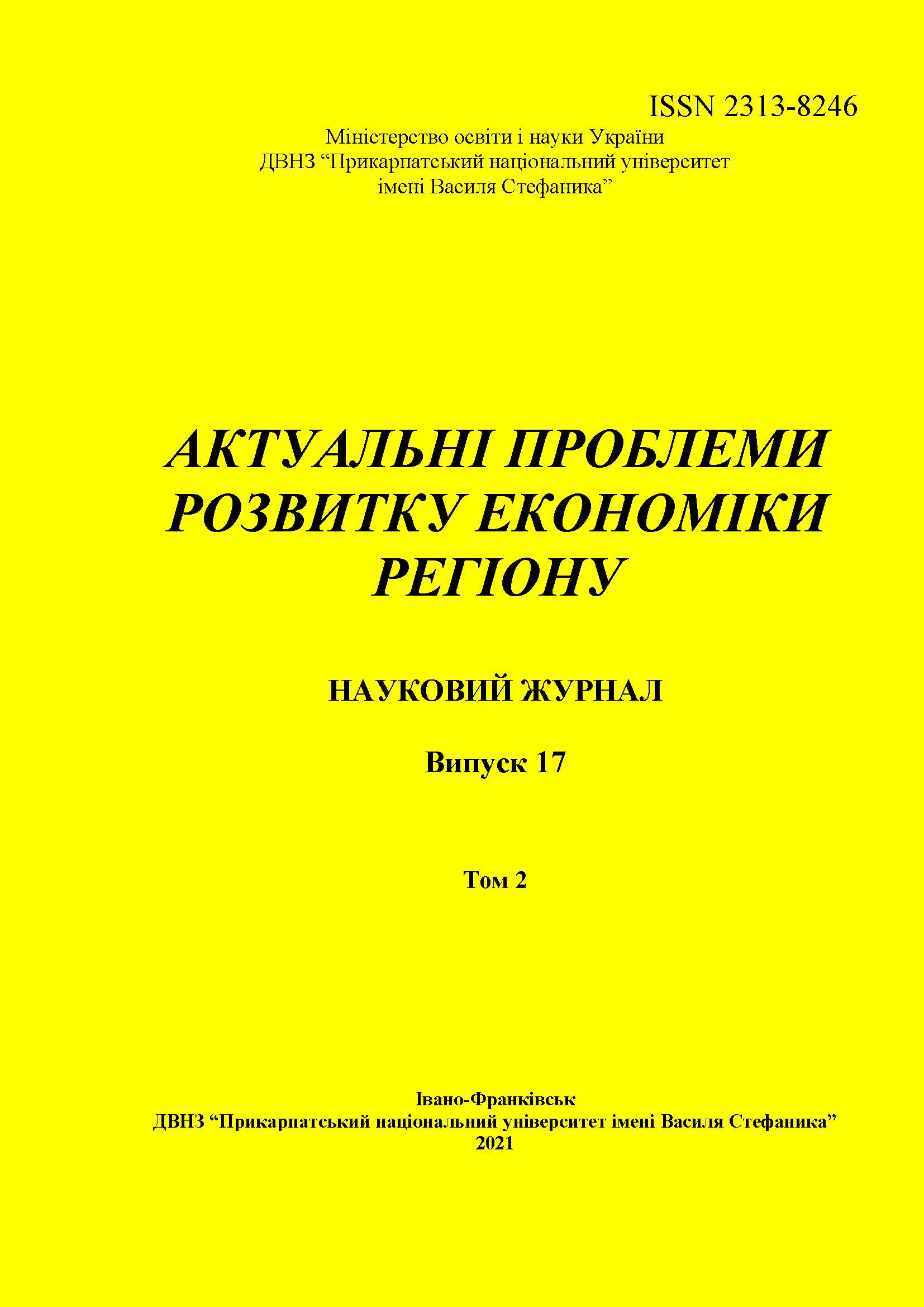POLITICAL-EKONOMIC FEATURES OF PUBLIC-PRIVATE PARTNERSHIP
DOI:
https://doi.org/10.15330/apred.2.17.67-76Keywords:
public-private partnership, private sector, stakeholders, investments, infrastructure, politekonomichni featuresAbstract
The aim of the article is to analyze the state of PPP in Ukraine, to identify political and economic features, advantages, disadvantages and risks for stakeholders, to identify blocks of barriers that prevent PPP in a market economic system. In solving the tasks we used a number of research methods: analysis, synthesis and comparison of the features of public-private partnership for stakeholders.
A successful platform for the development of public-private partnership (PPP) is a mutually beneficial relationship between all stakeholders. Public management often determines the vectors of development of industries, spheres and regions for effective investment activities, taking into account the development strategy. It should be noted that the advantages of PPP include the fact that the efficiency of management of both state and municipal property increases; the quality of public services to the population and businesses; conditions are created for the use of modern achievements of science and technology, innovations are introduced; the burden on the state budget is reduced and expenditures on the provision of public services are optimized.
Along with the advantages, there are a number of disadvantages of PPPs related to the implementation of projects. These include: certain difficulties associated with obtaining permits and approvals; procedure of complexity in re-registration of the right of use of the earth on the private partner; insufficient motivation and lack of professional training of officials, the presence of corruption.
The scientific novelty is that for the first time the political and economic features of public-private partnership are analyzed, which in a market economy are clearly manifested through the relations between stakeholders - stakeholders.
The development of public-private partnership has achieved key changes and has a positive dynamics: updated legal framework on PPP and concessions, opening of external proposals for initiation of potential partners of national or regional PPP projects, PPP roads.
A SWOT analysis of road infrastructure was conducted, which made it possible to identify strengths and weaknesses, threats and opportunities.
We have identified three blocks of shortcomings of public-private partnership in infrastructure projects: 1) complexity and high costs, 2) market and financial risks, 3) political and social risks.
The findings and recommendations are of practical relevance to regional and local authorities and the private sector, as the PPP's political and economic features will provide an opportunity for stakeholders to communicate, improve infrastructure, and optimize investment and risk allocation.
References
2. Status of PPP implementation in Ukraine, www.me.gov.ua/Documents/Detail?lang=uk-UA&id=9fc90c5e-2f7b-44b2-8bf1-1ffb7ee1be26&title=StanZdiisnenniaDppVUkraini&isSpecial=true. Accessed 14 Sept.2021
3. Panchenko, V. G. “Economic nationalism: political-economic aspect.” Business analytics in the management of foreign economic activity: Proceedings of the VI International scientific-practical conference, March 15, 2019. Kyiv: State Enterprise “Information and Analytical Agency”, 2019, pp. 168 – 172, 194.44.12.92:8080/jspui/handle/123456789/3896 (access date 11.07.2021).
4. Malin, O. L. Analysis of the development of public-private partnership in Ukraine and the world: qualitative changes and main trends in 2020: Analytical report. Odessa, 2020.
5. Public-private partnership program in the road sector: website, /roadppp.in.ua. Accessed 13 Sept.2021
6. Avksentiev, M. Yu. Public-private partnership as a modern mechanism for attracting investment in the infrastructure sector of Ukraine: author's ref. dis. ... cand. econ. Sciences: 08.00.03. Кyiv, 2010.
7. Melnyk, A. F. Public-private partnership in the system of institutes of national economy: mechanisms of development. Ternopil: TNEU, 2017.
8. Shemaeva, L. M. Public-private partnership as an instrument of national economy development: author's ref. dis. ... cand. econ. Science: 08.00.03. Kharkiv, 2018.
9. Savchenko, V. F., Stoyka, S. O., and V. O. “Stoyka Public-private partnership as a basis of financial and economic stability of the state.” Market infrastructure, Issue 56, 2021, pp. 45-53.
10. Sidoruk, I. S. “Public-private partnership as a basis for improving the efficiency of regional clusters with the participation of small enterprises.” Entrepreneurship and Trade, no. 30, 2021, pp.52-58.
11. Yurynets, Z. V., and M. O. Kokhan. “Development of hybrid projects in the context of public-private partnership and investment in infrastructure development.” Galician Economic Bulletin, no.62.1, 2020, pp.102-109.
Downloads
Published
How to Cite
Issue
Section
License
- Authors retain copyright and grant the journal right of first publication with the work simultaneously licensed under a Creative Commons Attribution NonCommercial NoDerivs 4.0 Unported License that allows others to share the work with an acknowledgement of the work's authorship and initial publication in this journal.
- Authors are able to enter into separate, additional contractual arrangements for the non-exclusive distribution of the journal's published version of the work (e.g., post it to an institutional repository or publish it in a book), with an acknowledgement of its initial publication in this journal.
- Authors are permitted and encouraged to post their work online (e.g., in institutional repositories or on their website) prior to and during the submission process, as it can lead to productive exchanges, as well as earlier and greater citation of published work (See The Effect of Open Access)


